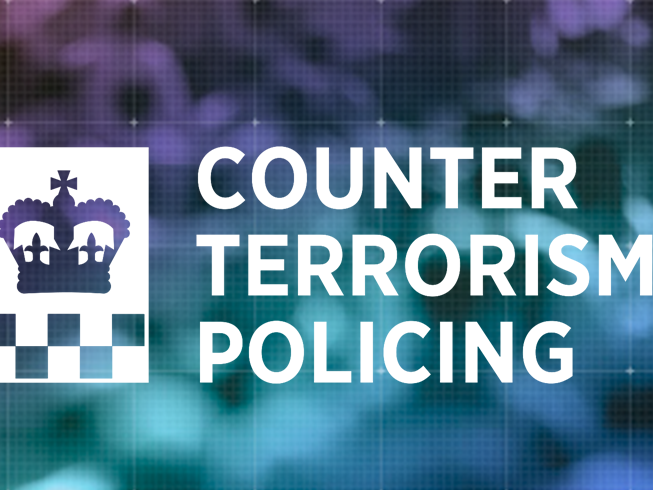
Brian Sims
Editor

Brian Sims
Editor
THE FIRST elements of the new Counter-Terrorism Operations Centre (CTOC) in London have been unveiled. They include a cutting-edge counter-terrorism operations suite which is now fully functional and a dedicated, state-of-the-art counter-terrorism forensics laboratory that will soon follow.

The first completed section of the new CTOC, which is being housed within the Empress State Building in West Brompton, has been visited by the Home Secretary, Priti Patel, and also Sadiq Khan, the Mayor of London. The pair were shown around the new operations suite by Metropolitan Police Service Assistant Commissioner Neil Basu and Ken McCallum, director general of MI5. The Home Secretary and the Mayor met and spoke with staff and officers who will be working from the CTOC.
Basu said: “The new Counter-Terrorism Operations Centre will allow those involved in countering the threat from terrorism in London to work much more collaboratively and effectively. It will make Londoners, and indeed everyone in the UK, safer from that threat.”
The Assistant Commissioner continued: “The need for closer collaboration between agencies is something that came out of the review that myself and the director general of MI5 committed our organisations to undertake following the devastating terrorist attacks in 2017. I’m delighted that we’re seeing the tangible outcomes from that review.”
Further, Basu observed: “The opening of the new operations suite marks another significant step on the journey towards delivering this world-class facility here in London and I would like to thank both the Mayor of London and the Government for their continued support with this project. The investment that we, the Mayor and the Government are all making will help to keep London and the UK at the very forefront of global counter-terrorism capability and the public will be safer because of it.”
Combined knowledge and skills
Ken McCallum stated: “Finding concealed threats is a difficult job. We’re always looking for ways in which to tip the odds in our favour. We know our chances of success are better when we combine the knowledge and the skills of experts from different organisations, fighting terrorism as a single team. The CTOC is a massive next step on that journey – a world first. It’s built around the needs of the public, not the convenience of institutions.”
Priti Patel explained: “The threats we face as a country from terrorism are diverse and always changing. To keep the British people safe, we must ensure that we’re one step of ahead of those who seek to do us harm and attack our way of life. That is why I have established the world-leading Counter-Terrorism Operations Centre, which unites partners from Counter Terrorism Policing, the intelligence agencies and the criminal justice system to ensure that they can discover and disrupt threats more quickly to better protect the public.”
The Home Secretary went on to state: “This is just one of the steps we’re taking to protect the British people from terrorism. We’ve also tightened sentencing for terrorist offenders, strengthened the supervision of terror offenders on licence and ended the automatic early release of terrorist prisoners. We’re also consulting on the proposed Protect Duty. The British people should be in no doubt that I will always do everything in my power to keep them safe.”
Necessary tools and resources
Sadiq Khan commented: “Keeping Londoners safe is my top priority and that means supporting our police and the Security Services such that they have the tools and resources available to protect our city from the constantly evolving threat of terrorism.”
Khan added: “The new Counter-Terrorism Operations Centre brings expertise and capabilities together in one place for the first time and I’m pleased that the £412 million of investment from City Hall and the Metropolitan Police Service has helped to make this national hub a reality, working to keep London and all of the UK safe. It builds on the work London has already started to ensure our capital remains a world leader in counter-terrorism detection and response.”
As well as visiting the new operations suite, the Home Secretary and the Mayor were shown around what will be a dedicated counter-terrorism forensics laboratory forming part of the new CTOC. The facility, which is due to open later this year, will allow investigators the opportunity to access some of the most advanced forensic science capabilities in the world and, importantly, do so in a much quicker and streamlined way.
The new CTOC will continue to be built and developed within the Empress State Building over the next four years. Gradually, different functions, teams and organisations will move in, with this phased approach allowing current operational capability to continue uninterrupted.
Operational improvement review
The development of the CTOC was born out of a series of terrorist attacks that occurred back in 2017 which killed 36 people and caused injuries and life-changing impacts to many more. The attacks and the subsequent operational improvement review – which was independently assured by Lord Anderson – highlighted the need to further develop the UK’s counter-terrorism response to ensure it continues to adapt to an evolving threat.
That need has been emphasised by further attacks here in the UK and across Europe in the past two years, as well as by the 29 deadly attack plots which have been successfully disrupted in the UK since 2017.
Having a CTOC in London will enable co-location of the London-based elements of Counter Terrorism Policing, the intelligence agencies and the criminal justice system, as well as other Government agencies focused on tackling the threat from terrorism.
It represents an integrated, partnership-driven approach within a purpose-built working environment which will bring the right people, skills and technology together to help strengthen the overall ability to protect the UK.
The CTOC will be a new part of the overall UK counter-terrorism response, bringing together – for the first time – all of the London-based counter terrorism elements in one place.